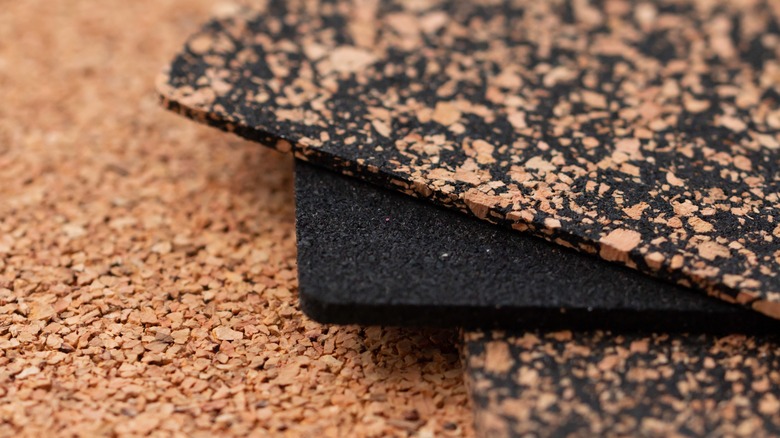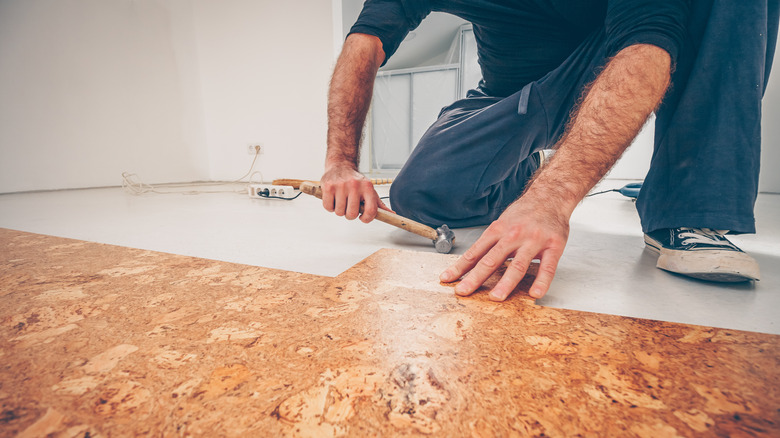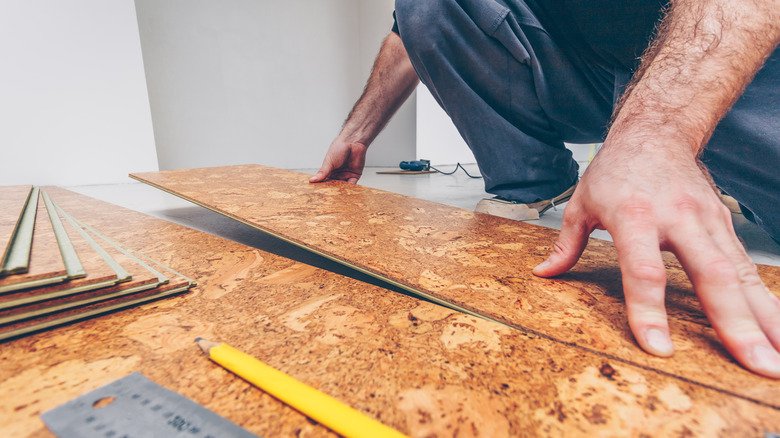How Long Does Cork Flooring Really Last Before It Needs To Be Replaced?
Deciding what type of flooring goes in your house is a big determinant for the rest of your home's décor. Most people go for hardwood, marble, and laminate flooring because of looks and other qualities like durability, longevity, and comfort, but one type of flooring that typically flies under most homeowners' radars is cork. You don't have to blink twice — you read that right. Using cork for flooring is a thing, and not a bad one, either. If you want a flooring option that will stand the test of time, then going with cork would be satisfying. Cork flooring can last you about 40 years before you start to worry about replacing it.
Cork floors are gorgeous and as natural-looking as hardwood, perfect for those who want a touch of nature in their home. If you have them, then you already know how hardy they are. As the years roll by, you may start to see some signs of deterioration in varying degrees based on things like age, what chemicals you use to clean it, and whether it incurs water damage. Minor surface trauma can be repaired, but for major damage, replacement is necessary.
You know your cork floor needs replacing when it starts to become discolored, warp, or when the scratches become overbearing. It also matters what type of cork flooring you have: floating or glue-down. Floating cork floors are linked to each other and aren't attached to the subfloor while glue-down cork floors are attached with glue.
When to repair cork floors vs. replace them
For superficial damage to your cork flooring like localized dents and scratches, a repair is all you need. This can usually come about every few years or so when you refurbish the top layer. However, for an older floor with extensive damage, a larger solution is needed.
Although your wine cork seems to take on liquid bravely, your cork floors are not at all waterproof, but they are water-resistant. They are impervious to moisture which makes them a hit for bathrooms and kitchen flooring. This quality also makes them mold and mildew-resistant. However, heavy water damage such as flooding is still possible and can lead to discoloration and warping. Also, while cork is relatively malleable and can take on the form of whatever furniture is on top of it without permanent dents, age, and activity can wear it down eventually. In these cases, you would need to replace the flooring.
The replacement procedure for floating cork floors is the easiest kind because it comes in planks that are linked together. All you have to do is remove the affected boards and link in their replacements. If you have to replace flooring near the wall then strip the molding or trim first before replacing the planks and reinstalling the trim. Redoing glue-down cork tiles isn't as straightforward as this, but it's still possible for the diehard DIY-ers.
Flay the cork tiles off the ground to lay down new ones
Glue-down cork flooring comes in tiles that are applied to the floor using adhesives. They're ideal for places that are prone to wetness, such as bathrooms. Removing them will require special tools like a chisel, scraper, knife, mallet, sander, leveler, and contact cement. You have to completely scrape away every bit of the former cork flooring before laying over the new one.
Chop off some pieces of the old cork floor with the knife so that you can have a place to wedge the chisel and pound with the mallet. Separate the old tiles from the floor by breaking them open. Do this for the entire affected area until all the old tiles have been upheaved. Scrape away glue and cork chunks, and use a leveler to bring the floor to a smooth finish. Next, spread the contact cement onto the floor and lay the new tiles over it. Make sure it's completely dry before stepping on it.
If you don't have floors yet and are considering cork as a potential option, then knowing how to maintain it is important. Luckily, the ritual is simple: sweep them regularly and use a damp cloth and mild soap to clean up liquid messes. Cork floors are usually finished with a top coat of varnish to make them nice and shiny. Rejuvenate it every one to two years by applying another layer of varnish or acrylic to give a much-needed facelift.


